He has won numerous major international awards, including the 2009 Gardner International Award, the 2014 Lasker Basic Medicine Research Award, and the 2017 Breakthrough Prize in Life Sciences, and has led the world in research on "vesicular stress response" in the field of life sciences. Dr. Kazutoshi Mori, a professor at the Graduate School of Science, Kyoto University, who is famous as a candidate for the Nobel Prize.
We asked Assistant Professor Akira Shiraishi of the university about the fun of research, the path to the recognition of the great discovery, the scenery that looked ahead after believing in the research hypothesis that he had set up, and the prospects for future research. rice field.We also received a message to high school students.
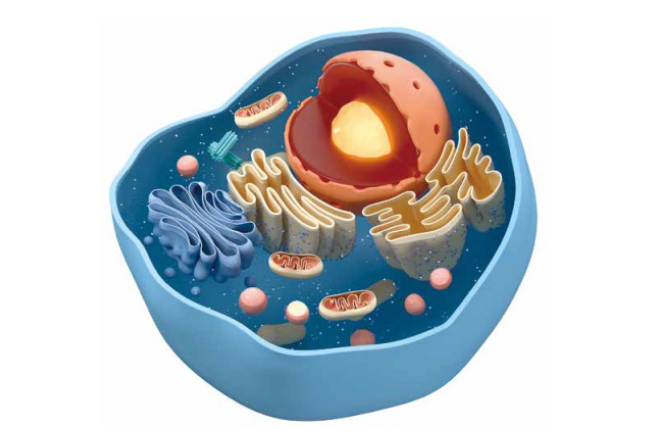
What are the research areas and the world's first research results?
Shiraishi: First, please tell us about the life phenomena and concepts that are important for understanding your research.
Woods: One is the cell, which is the basic unit of life.All life is made up of cells.We humans are multicellular organisms made up of about 37 trillion of them.On the other hand, some unicellular organisms live on only one cell.Cells are surrounded by a membrane (cell membrane) to separate their outside and inside, and in eukaryotes such as humans, there are various compartments surrounded by a membrane inside the cell membrane, each of which plays a role. I am sharing.Organelles, such as mitochondria, make energy, and lysosomes break down and recycle old ones.
Shiraishi: It would be nice if you could check it in the biology textbook or the illustration above.
Woods: The other is a protein that is responsible for the life phenomena of all living things.It is a molecule made up of a large number of amino acids composed of hydrogen, carbon, nitrogen, oxygen, and sulfur linked in a chain, and the design information that determines the number and arrangement is written in the deoxyribonuclear (DNA). Based on the design information read from DNA, it is finally synthesized in a protein synthesis factory called ribosome through various processes and folded into a specific shape, but it can only function in this state. ..Move, see, smell, talk, think, laugh.Proteins are responsible for all of our casual activities.
Shiraishi: That's where the endoplasmic reticulum comes into play.
Woods:yes.Proteins are said to "fold into specific shapes," but the endoplasmic reticulum, a type of organelle, plays a very important role here.In the endoplasmic reticulum, there are many special proteins (= molecular chaperones) that shape the protein, and thanks to its function, a well-shaped protein is produced, which goes to the destination and functions.On the other hand, some proteins can be malformed.If this defective product is sent out as it is, various inconveniences will occur, and the endoplasmic reticulum also discriminates and destroys it.
Shiraishi: It's not just trimming, it's also breaking.Can you finally explain your research in a concrete and concise manner?
Woods: In a nutshell, is it "a study to find out the secret of the restoring force of the threat inherent in the endoplasmic reticulum"?Since cells are exposed to various environmental changes, sometimes the inside becomes strange, that is, stress is applied.When stress is applied to the endoplasmic reticulum, a lot of malformed proteins are produced, and well-formed proteins are turned into defective products.And when a lot of them accumulate, the endoplasmic reticulum sends that information to another organelle, the nucleus, to increase the number of molecular chaperones and the amount of devices that break down defective products.You try to maintain your ability to control the quality of your protein.This series of reactions is the "stress response of the endoplasmic reticulum", and I clarified the mechanism of how the endoplasmic reticulum senses the increase in defective products and sends that information to the nucleus. It is.
Shiraishi: That led to the awards of numerous international awards such as the Canada Gairdner International Award, the Lasker Basic Medical Research Award, and the Breakthrough Prize in Life Science, that is, the world's high praise.If you can tell us about its significance, I think you will deepen your understanding of your research.
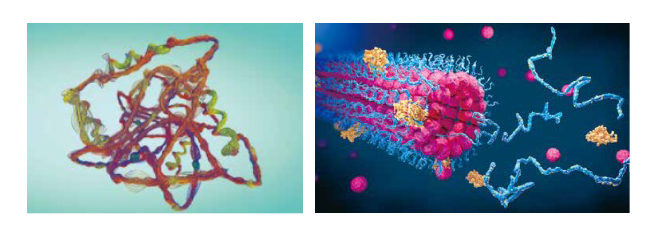
What led to numerous international awards?Prospects for next-generation research
Woods: For that, I would like to look back on the history of research on the endoplasmic reticulum or cell biology in general.
Although many researchers are involved in research on the endoplasmic reticulum, it can be classified as a "generation" based on some important discoveries.I divide those who have achieved results from the 1950s and 60s as the first generation, those from the 1970s as the second generation, those from the 1980s as the third generation, and those from the 1990s as the fourth generation. It belongs to the XNUMXth generation.
Shiraishi: Compared to other fields, it is developing at an amazing speed in a short period of time.
Woods: The first generation is represented by Dr. Alberto Claude, Dr. George Parade, and Dr. Christian de Duve.In 1974, he discovered that there are two types of ribosomes, which are factories that synthesize proteins, "free ribosomes" that exist in the cytoplasm and "endoplasmic reticulum membrane-bound ribosomes" that adhere to the outside of the endoplasmic reticulum membrane. Received the Physiology Award.I would like to mention Dr. Günter Blobel as the second generation.Amino acids that make up proteins have a sequence called a "signal sequence," and in 1999, they discovered a mechanism that determines where each protein functions in cells, like a tag, and in 2013, Nobel Medical Physiology. Received the award.The third generation is Dr. James Rothman and Dr. Randy Schekman, who won the Nobel Prize in Physiology or Medicine in XNUMX.They found that proteins enter the endoplasmic reticulum and then are transported by the endoplasmic reticulum to another organelle, the Golgi apparatus.It was also in this generation that it became clear that proteins need to be properly folded in order to function.And the fourth generation includes me and Dr. Peter Walter, who I will introduce later.It has been elucidated that only proteins that are properly folded in the endoplasmic reticulum are transported to the Golgi apparatus, and that defective proteins are excreted in the cytoplasm and degraded.
Shiraishi: I'm curious about the XNUMXth generation after the XNUMXth generation.What kind of research field corresponds to the fifth generation?
Woods: I think this is a study using an analysis method such as "Comprehensive gene expression analysis".Until the 10th generation, individual genes (about XNUMX genes at most) were investigated, but in the XNUMXth generation, the entire genome (about XNUMX genes in humans) is investigated at once and an integrated understanding is attempted. did.
The 1990s, which competed with rivals
Shiraishi: The five international awards so far have been co-winners with Dr. Peter Walter.I heard that you had a fierce research battle with your rival Dr. Walter.
Woods: Sometimes I got sick due to great pressure, but without that anguish, I wouldn't be myself now.It was in the early 1990s that we were conducting genetic analysis to identify the proteins responsible for each step of the endoplasmic reticulum stress response.I have captured evidence that a protein called IRE1 is activated when the endoplasmic reticulum is exposed to stress and accumulates poor proteins, transmitting internal information to the nucleus.However, at the stage of publishing the paper, Dr. Walter, who had already made a name for himself in the field of life science research, suddenly rushed in.He published his research on the identified IRE1 in the world's leading journal, Cell, without detailed functional analysis as a protein. It was June 1993.A world where research is only accepted by the earliest.The feeling of frustration that I was overtaken made my head white once.However, we will publish a paper in the same "Cell" about two months after him, incorporating research results at a higher level than Dr. Walter's paper, such as detailed functional analysis as a protein. I was able to.It is extremely unusual for Cell to publish two reports of similar research results in such a short period of time, and I am truly glad that I did not give up.Even after that, the rivalry continued, such as the interpretation of research results being different from Dr. Walter at international academic conferences, etc. I think it led to the joint award of international awards.
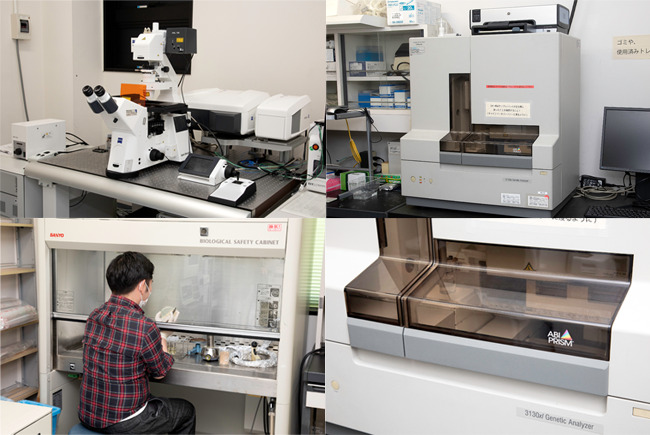
Where is the spirit of overcoming difficulties and pressures?
Shiraishi: It's fierce.Why wasn't it crushed by such great difficulties and pressures?
Woods: I think my spiritual strength is the result of Kendo, which I have continued since I was a child.In Kendo, regardless of the school, the four "surprise, fear, suspicion, and suspicion" are called "four commandments," and it is warned that even one of these should not be caused in the heart during training. increase.The game of kendo is often dominated not only by skill but also by the movement of the heart, and even if there is a gap in the opponent, it cannot be seen when one of the four commandments occurs in the heart.Moreover, it atrophies itself and gives a chance to the other party, and as a result, it is struck.In my research, I have always tried to get rid of these four commandments, maintain a normal mind, and cultivate a thoughtful and active spirit, which may be alive.
About medical application and AlphaFold2
Shiraishi: You have overcome many pressures and led the research field of "stress response of the endoplasmic reticulum".Finally, please tell us about your future prospects.
Woods: One is applied research to medical treatment.In recent years, the relationship between neurodegenerative diseases such as Parkinson's disease, kidney disease, metabolic disorders such as obesity and fatty liver, and follicular stress has been reported, and I think it will spread in the future.Since cancer cells are thought to continue to proliferate by abusing the endoplasmic reticulum stress response, they are also attracting attention as targets for anticancer drugs.The other is the progress of life science research using big data and AI.For example, AlphaFold 2021, announced by the Protein Structure Prediction Center in 2, shocked many researchers. AlphaFold 2 is an AI system developed by DeepMind that can predict the structure of proteins.The accuracy is surprisingly high, and there are cases where the structure, which has been a mystery for several years, could be predicted very easily.In this way, new technologies are being pioneered one after another in the field of life science, and they are steadily developing.
Message from Mr. Mori to high school students
Shiraishi: Finally, do you have a message for high school students and future researchers?
Woods: First, find two things you want to do and work with enthusiasm.In my case research and kendo.College student I aimed to pursue a research path from a certain time, but if it didn't work out, I decided to live while engaging in kendo.That is why I decided to pursue my research path.By the way, I still teach kendo to elementary and junior high school students through the Kyoto Prefectural Kendo Dojo Federation.The other is to always think positively.It is similar to the four commandments of Kendo's surprise, fear, suspicion, and misunderstanding, but especially when you are competing, do not think about losing.Also, don't worry about things that you can't do with your own strength.I think this applies to everything, not just sports and research.If you follow the path you believed in and lose as a result, it is important to think again and start again.Partly because of the influence of the new coronavirus pandemic, I feel that more and more young people are chasing reality rather than dreams.I want you to have the courage to shake off such air and take a step forward.I hope that as many high school students and young people as possible will find what they want to do and what they can devote themselves to and strive toward their dreams.
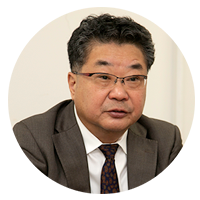
Kazutoshi Mori
Graduated from the Faculty of Pharmaceutical Sciences, Kyoto University in 1981, and completed the master's program at the Graduate School of Pharmaceutical Sciences, Kyoto University in 1983. In 1987 he was a Ph.D. in Pharmacy (Kyoto University). Assistant at Gifu Pharmaceutical University in 1985, Doctoral Researcher at Texas University in 1989, Deputy Chief / Senior Researcher at HSP Research Institute in 1993, Assistant Professor at Graduate School of Life Sciences, Kyoto University in 1999, Awarded by Graduate School of Science, Kyoto University from 2003 (Bioscience) Major, Biophysics Class), up to the present. 2005 Wiley Award, 2009 Gardner International Award, 2011 Uehara Award, 2013 Asahi Award, 2014 Lasker Basic Medicine Research Award, 2016 Japan Academy Award / Imperial Prize, 2018 Life Science Breakthrough Award, and many others .. He was elected Person of Cultural Merit in 2018.Born in Okayama Prefectural Kurashiki Seiryo High School
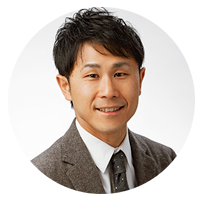
Mr. Akira Shiraishi
Graduated from the Faculty of Agriculture, Kyoto University in 2008, and completed the master's course at the Graduate School of Agriculture, Kyoto University in 2014.While enrolled in his master's program, she was dispatched to Bangladesh as a short-term Japan Overseas Cooperation Volunteer through the Japan International Cooperation Agency (JICA). She received a PhD (Agriculture) from the Graduate School of Agriculture, Kyoto University in 2015 after working as an intern at the United Nations Food and Agriculture Organization (FAO) in 2016-2016 and a research fellow at the Japan Society for the Promotion of Science in 2017-2017.In the same year, he completed the Kyoto University Graduate School Program.After completing the doctoral course at the same graduate school, he worked as a foreign affairs secretary in the Economic Security Division of the Economic Affairs Bureau of the Ministry of Foreign Affairs in 2017-2018. After working as a FAO Junior Specialist in 2018-2020 and a FAO Food Safety Specialist in 2020-2021, he has been an Assistant Professor at the Graduate School of Agriculture, Kyoto University since January 2021.Born in Gifu Prefectural Tajimi Kita High School.
Universities and graduate schools where you can learn "endoplasmic reticulum stress"
| University (undergraduate) | ||
| University name | Faculty | Laboratory details |
| Kyoto University | Faculty of Science (Department of Biological Sciences) | http://www.upr.biophys.kyoto-u.ac.jp/ |
| Kyoto Sangyo University | Faculty of Life Science | https://ushioda-lab.com/ |
| Okayama University | Pharmacy | http://www.okayama-u.ac.jp/user/yakko/news.html |
| Hiroshima University | School of Medicine Department of Medicine | https://home.hiroshima-u.ac.jp/imaizumi/index.html |
| Miyazaki University | School of Medicine Department of Medicine | https://nishitoh.jimdosite.com/ |
| Kanazawa University | Pharmaceutical Insurance School of Medicine | https://med03.w3.kanazawa-u.ac.jp/ |
| Graduate School (Graduate School) | ||
| University name | Graduate School / Affiliation | Laboratory details |
| Osaka University | Graduate School of Medicine (Molecular Biological Genetics) | https://www.ugscd-osaka-u.ne.jp/mbs/index.html |
| Graduate School of Medicine (Psychiatry Class) | https://www.med.osaka-u.ac.jp/pub/psy/ | |
| Tokushima University | Institute for Advanced Enzymology (Biological Function) | https://www.iams.tokushima-u.ac.jp/lab/oyadomari/ |
| Institute for Advanced Enzymology (Genome Control) | https://www.iams.tokushima-u.ac.jp/lab/katagi/ | |
| Nara Institute of Science and Technology | Kono Specially Appointed Research Project | http://www.naist.jp/iri/kouno/ |
| Stress Microbial Science (Takagi Laboratory) | https://bsw3.naist.jp/ courses / courses305.html | |

